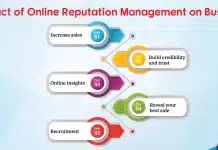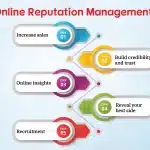Most cyber-attacks begin with emails — an employee is convinced to open a malicious attachment, click on a dangerous link and expose his credentials, or send sensitive data in response. Attackers trick their victims with carefully crafted email messages, making a wrong feeling of trust or urgency. For these purposes, they use various techniques — fake trusted domains or brands, pretend to be well-known employees, apply previously compromised addresses to launch campaigns, etc. Any corporate user can be targeted by attackers. Email Security to Protect Against Phishing Attacks, In case of a breach, such an employee will serve as a channel, which can be very costly for the business.
So what is most important for IT and security teams to provide solutions to save all their users — from frontline employees to senior managers? Here are 6 tips to help your organization keep your email secure.
1. Multifunctional solution for email protection
As security solutions evolve, attackers are also rapidly adapting their methodologies to remain undetected. Polymorphic attacks are becoming more and more popular, aimed at bypassing conventional defensive measures. Therefore, organizations need solutions that, in addition to core attack vectors, focus on zero-day attacks and targeted attacks. Security checks based solely on standards or known signatures and reputation will not help in this case. Meanwhile, those companies aimed at changing the mailing service may face the inability to read the email archive from the previous mailing client. In such a case, we recommend to download email viewer, which can solve this problem.
2. An easily configurable system reduces the likelihood of hacking
Software that requires comprehensive configuration can also create some kind of security holes. Solutions that secure email (external and internal) and are useful without complex settings or email flows are a great advantage for companies. In addition, you should select solutions that, in simple ways, bridge the gap between security teams and messaging teams.
3.Verify that you have post-delivery threat detection configured
Insecurity threat prevention, no solution is 100% effective as hackers are constantly changing their way of working. Solutions that provide scenarios for automatically investigating alerts, analyzing threats, assessing impacts, and taking actions are critical to an effective and efficient response. In addition, IT security teams need an investigation and search experience to easily identify specific indicators of a breach or other entity in the body of an email. Check if your solution allows security services to identify threats and easily remove them.
4. A consistent model to increase user awareness and readiness for attacks
Informed employees can dramatically reduce security incidents through email attacks. Any security strategy will not be considered complete without attention paid to raising awareness among end-users. A key component of this strategy is raising user awareness with phishing simulators, educating them on what to look for in suspicious emails so that users do not become victims to actual attacks.
5. Hackers catch users where they are most active
While email phishing is the main vector of attacks, cybercriminals will target places where users collaborate, communicate, and store their confidential information. As forms of exchange, collaboration, and communication other than email become more popular, attacks targeting these vectors are also on the rise. Therefore, the organization’s anti-phishing strategy mustn’t focus solely on email.
6. Security solutions must consider multiple threats
Hackers target the weakest side in an organization’s defense. They look for the initial login vulnerability, and then once inside, they look for various ways to scale and increase their influence. They usually do the trick by trying to compromise other users, increasing their privileges where possible, and finally reaching a critical system or data repository. As their influence grows in an organization’s environment, they will reach various endpoints, identities, mailboxes, and services.
The preconditions for mitigating the impact of such attacks are rapid detection and response. This is possible only when the protection of these systems is not narrowly applied. This is why it is so important to have a comprehensive understanding of security solutions. Look for an email security solution that integrates well with other security solutions such as endpoint security, CASB, privacy protection, and more. Look for multi-functionality of integration that goes beyond signal integration and is strong in terms of flow detection and response.








